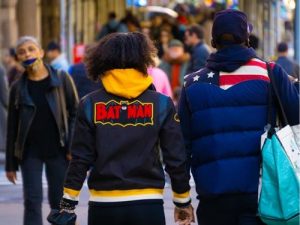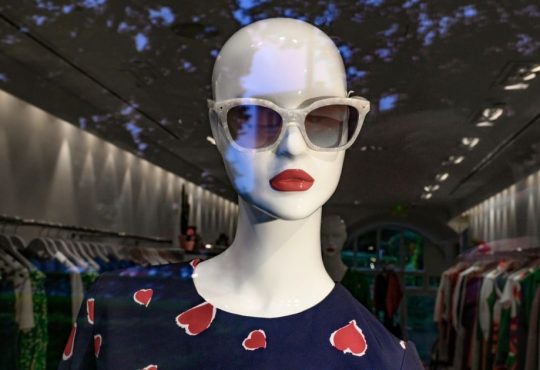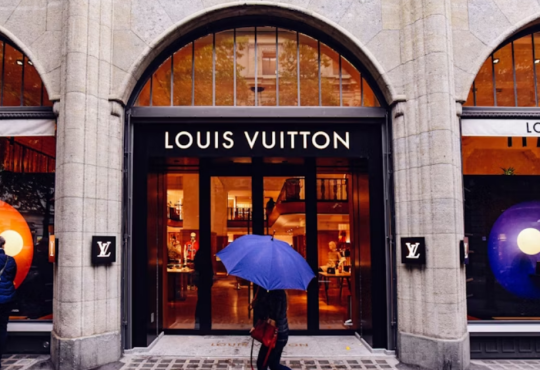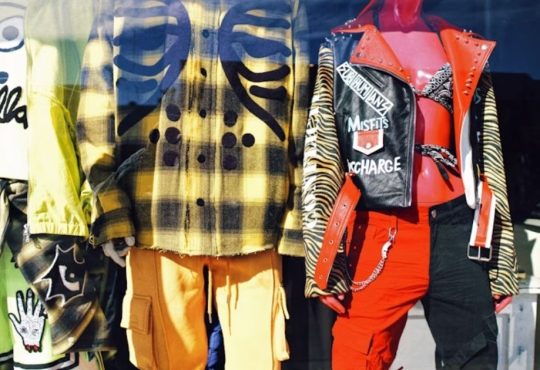In a world where fashion trends shift rapidly, the desire to stand out while being eco-conscious has led to a resurgence in DIY jackets customization. By transforming old garments into unique pieces, individuals not only express their creativity but also contribute to a more sustainable fashion industry.
The Allure of Flexibility

In the ever-changing world of fashion, trends seem to shift almost overnight. That must-have handbag or statement jacket that turns heads today might feel completely outdated by next season. For style enthusiasts who want to stay ahead of the curve without committing to long-term purchases, fashion rentals provide an ideal solution. Whether through a monthly subscription service or a pay-per-piece model, these platforms allow consumers to constantly refresh their wardrobes, trying new styles, colors, and textures with ease.
This level of flexibility opens up exciting opportunities for experimentation. Want to rock a bold, avant-garde designer dress for a gala without worrying about storage? Or try a limited-edition seasonal bag without splurging hundreds of dollars? Rentals make it possible. Not only do they reduce the risk of buyer’s remorse, but they also help keep closets clutter-free while giving fashion lovers the freedom to embrace creativity, novelty, and luxury—on their own terms. In short, fashion rentals aren’t just practical; they’re a gateway to exploring style in a way that’s dynamic, sustainable, and entirely guilt-free.
Cost-Effective Luxury
Owning high-end designer pieces has traditionally been a symbol of status and sophistication, but the steep price tags often put them out of reach for many fashion enthusiasts. Enter fashion rentals, which have completely transformed how people experience luxury. Now, aspirational shoppers can slip into a $2,000 gown, a statement Balenciaga bag, or a classic Chanel jacket for just a fraction of the cost—without sacrificing the thrill of wearing these coveted items.
This trend is being fueled largely by younger consumers, particularly Gen Z and millennials, who prioritize experiences over ownership. For them, the value lies not in permanently possessing a designer piece, but in the ability to showcase it for a special occasion or a curated social media moment. Rentals allow them to enjoy the prestige and glamour associated with luxury brands while staying financially savvy and wardrobe-savvy. Beyond just clothing, this approach taps into a lifestyle of accessible indulgence, where fashion becomes an experience to be lived, shared, and celebrated—without the long-term commitment or guilt.
A Greener Alternative
The environmental footprint of the fashion industry is staggering. From the mountains of discarded textiles filling landfills to the toxic dyes polluting waterways, fashion is one of the most significant contributors to global carbon emissions. For eco-conscious consumers, renting clothing presents a tangible way to make a positive impact. By circulating garments among multiple users, fashion rentals extend the life cycle of each piece, thereby reducing the need for constant production and minimizing waste.
Beyond simply reusing clothing, many rental companies are taking additional steps toward sustainability. Eco-friendly packaging, carbon-neutral shipping, and meticulous garment care are becoming standard practices, ensuring that every item remains in prime condition for longer. This model enables shoppers to enjoy high-quality, trendy fashion while aligning with their values, allowing them to look stylish and feel responsible simultaneously. In essence, fashion rentals offer more than convenience—they’re a practical, stylish, and environmentally conscious alternative to traditional ownership.
The Economics of Renting Fashion
Let’s face it: fashion can be costly. Designer shoes, handbags, and gowns often carry price tags that put them far out of the average shopper’s reach. Fashion rentals are changing that equation, democratizing luxury by making high-end pieces temporarily accessible. Imagine renting a $2,500 Gucci bag for less than $100 for a week—suddenly, anyone can indulge in the glamour of luxury brands without draining their savings. In a time when inflation and rising living costs are shaping every purchasing decision, rentals offer a smarter financial alternative, allowing consumers to enjoy style and sophistication without compromise. It’s not just a practical solution—it’s a way to experience high fashion on your terms, experimenting with bold or statement pieces without the lifelong commitment.
Sustainability in the Spotlight
The environmental toll of the fashion industry is impossible to ignore. Millions of tons of textiles end up in landfills each year, while fast fashion continues to produce disposable clothing at a staggering rate. Fashion rentals offer a compelling alternative, emphasizing reuse and longevity over waste. Every garment rented multiple times extends its life cycle and reduces the demand for new production, making a tangible difference in the fight against environmental degradation. Many rental platforms are also stepping up their efforts with eco-conscious initiatives, from sustainable dry cleaning practices to carbon-neutral delivery options. For today’s eco-minded shoppers, renting is no longer just about looking good—it’s about making fashion choices that reflect values, proving that style and sustainability can go hand in hand.
Social Media and the “One-and-Done” Mentality
In today’s era of Instagram feeds and TikTok trends, the pressure to constantly showcase new and exciting outfits is relentless. Fashion rentals perfectly cater to this social-media-driven culture, allowing individuals to debut fresh looks without the guilt or clutter associated with overconsumption. The so-called “one-and-done” mentality—wearing an outfit just once for a special event and then returning it—fits seamlessly with the transient nature of online trends. Whether it’s a viral dress for a weekend party or a statement bag for a photo shoot, renting allows fashion enthusiasts to keep their style dynamic and camera-ready. Beyond simply satisfying the desire for novelty, this approach fosters a more sustainable fashion ecosystem by promoting shared use and reducing waste.
Emotional Value: Renting vs. Owning

Despite the convenience of rentals, owning a home retains a unique emotional resonance. Certain garments and accessories—like a wedding dress, a carefully tailored coat inherited from a parent, or a designer bag purchased to celebrate a career milestone—carry memories and signify personal milestones that rentals simply cannot replicate. However, renting offers a different kind of emotional reward: the thrill of constant reinvention. For many modern consumers, the solution lies in striking a balance between convenience and sustainability. Timeless staples, such as jeans, classic coats, and everyday shoes, are purchased and cherished, while bolder, trend-driven, or seasonal pieces are rented. This hybrid approach satisfies both the desire for meaningful ownership and the excitement of ever-changing fashion, allowing wardrobes to evolve in line with personal style, social media trends, and the broader rhythms of life.
Why DIY Fashion Is Making a Comeback
The resurgence of DIY fashion upgrades reflects a convergence of creativity, individuality, and conscious consumerism. Today’s shoppers are increasingly seeking pieces that tell a personal story rather than conforming to mass-produced trends. At the same time, sustainability has become a guiding principle—upcycling, reworking, or refreshing existing garments keeps clothes out of landfills and reduces the environmental toll of fast fashion. In a culture that values both originality and eco-conscious choices, DIY fashion strikes the perfect balance: it’s stylish, sustainable, and deeply satisfying to create. From repurposing old jackets to transforming thrifted finds, DIY projects allow fashion enthusiasts to exercise their imagination while making responsible wardrobe decisions.
The Personal Touch
What sets DIY fashion apart is the story woven into each piece. A hand-stitched patch, a hand-painted motif, a swapped button, or even the creative use of studs and rhinestones turns an ordinary garment into a truly unique work of art. Each customization reflects the wearer’s personality, interests, and vision, making the piece more than just clothing—it becomes a statement of self-expression. Unlike fleeting trends, DIY jackets and other handmade upgrades carry an enduring sense of individuality, allowing fashion lovers to wear their creativity literally on their sleeves. In many ways, these personalized garments celebrate the wearer as much as the style itself, offering a form of expression that is both meaningful and fashionable.
The Bigger Picture: Sustainability Meets Style
Upcycling isn’t just about expressing creativity—it’s part of a broader shift toward sustainable fashion. By reworking and refreshing old jackets, you actively reduce the demand for fast fashion, prevent textiles from ending up in landfills, and extend the lifespan of garments you already own. The result is a wardrobe that’s not only stylish but also environmentally responsible. Beyond its eco-friendly benefits, DIY fashion offers a sense of accomplishment that’s hard to match—transforming something old into something uniquely yours is as rewarding as it is visually striking. Additionally, compared to buying new pieces, DIY projects are often far more affordable, making them an accessible way to revitalize your wardrobe without incurring significant costs.
Tools and Materials You’ll Need
Starting your DIY fashion journey doesn’t require a complete workshop or professional experience. A basic toolkit can include scissors, fabric glue, a simple sewing kit, fabric-safe paints or markers, iron-on patches, and embellishments like beads, studs, or rhinestones. Most of these supplies are inexpensive, widely available at craft stores, or can be purchased online in bundles for beginners. For those just starting out, fabric glue and iron-on patches are foolproof ways to achieve a polished look. Meanwhile, individuals with sewing skills can tackle more intricate designs and add personalized touches. With just a few simple tools and a spark of creativity, even the most ordinary jacket can be transformed into a one-of-a-kind statement piece that’s both fashionable and sustainable.
DIY Jackets as Streetwear Statements
Street style has fully embraced the DIY ethos, turning customized jackets into bold fashion statements. Vintage denim jackets splashed with graffiti-inspired designs, patchworked blazers, and cropped leather moto jackets are making waves in style hubs like Tokyo, New York, and London. These pieces blur the line between personal creativity and high fashion, proving that self-expression through clothing isn’t just a hobby—it’s a statement. Each unique jacket tells a story, reflecting the wearer’s individuality while keeping them firmly on trend.
The influence of DIY fashion has even reached luxury runways. Designers at houses like Gucci and Dior are now incorporating DIY aesthetics into their collections, featuring embroidered motifs, hand-painted details, and visible mending that echo the charm of self-customized garments. This fusion of craftsmanship, street style, and high fashion signals a cultural shift: originality and personal flair are now just as valued as polished perfection. In essence, DIY jackets have evolved from simple upcycling projects into coveted streetwear statements that command attention and celebrate creativity at every turn.
Rewriting Fashion’s Story, One Stitch at a Time
Upgrading an old jacket isn’t just about the end result—it’s about the process. There’s joy in slowing down, in taking time to create something meaningful, and in seeing your wardrobe as a canvas. Each stitch or brushstroke makes the piece yours. On a larger scale, these small acts help curb waste and promote a circular fashion mindset. Instead of discarding clothes, you’re rewriting their story.





